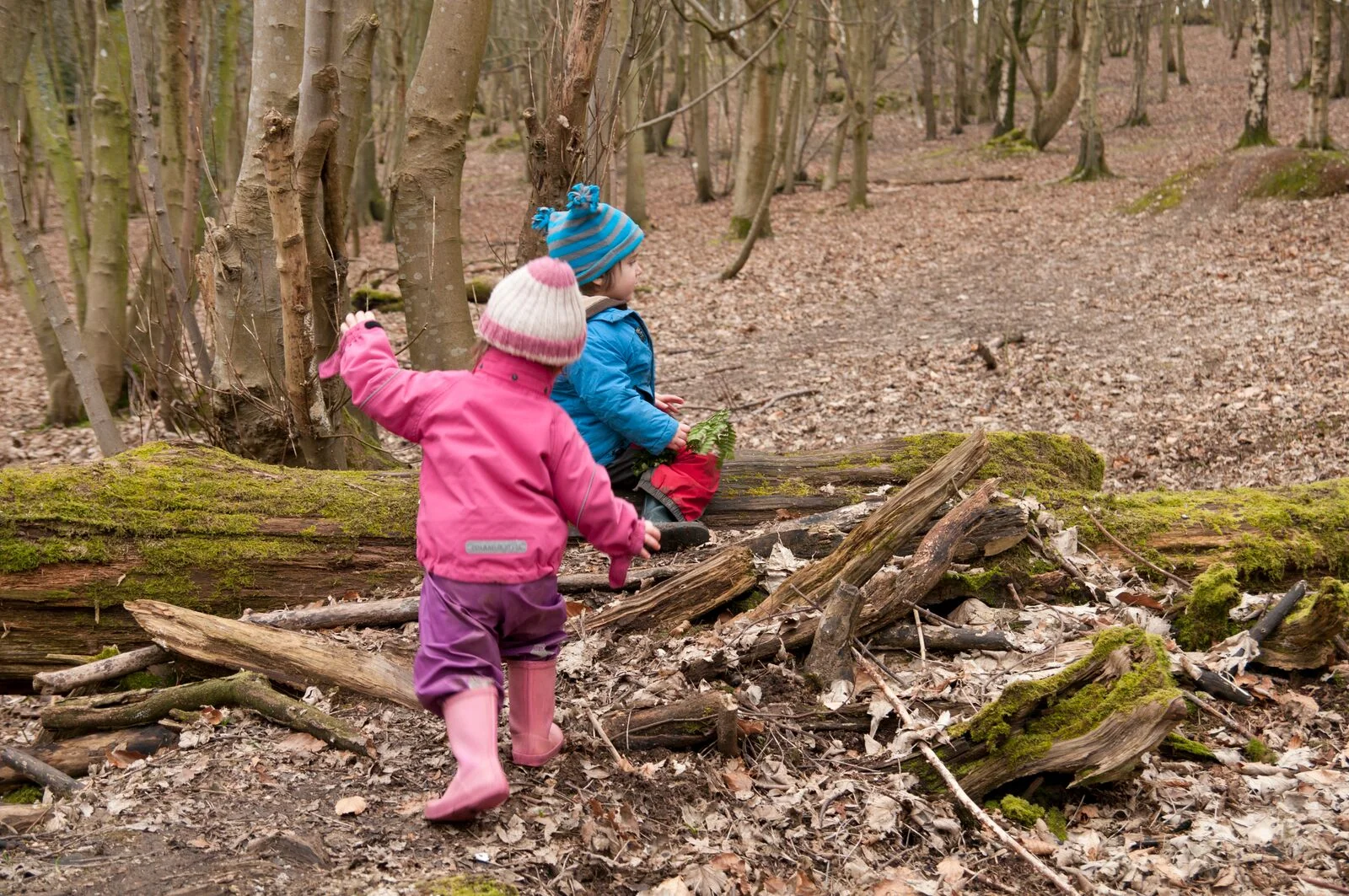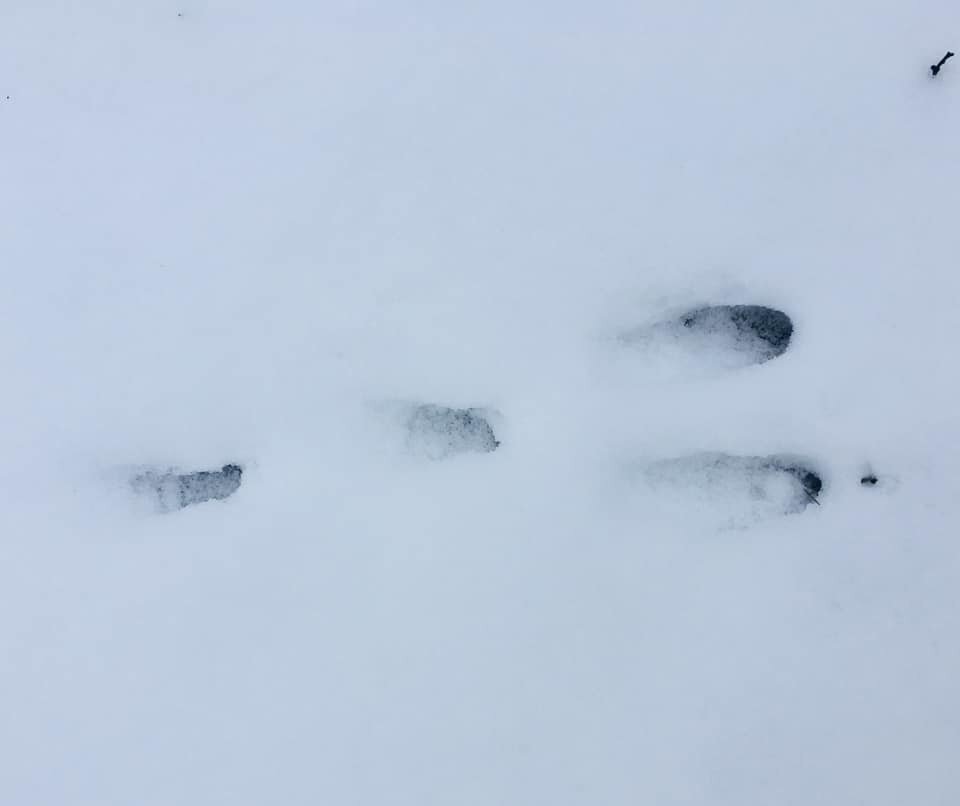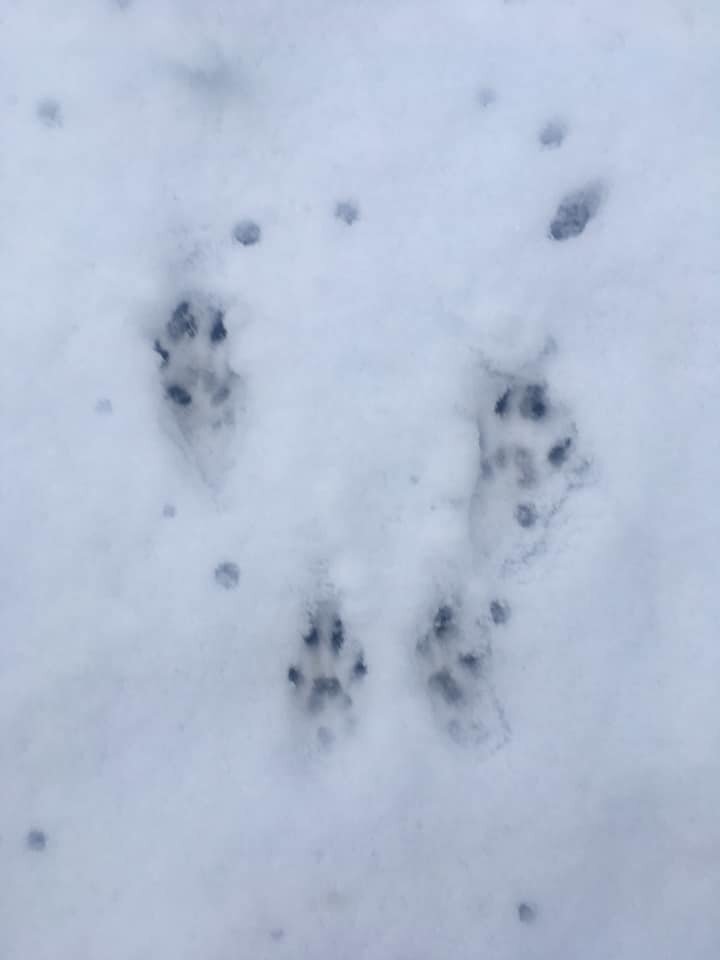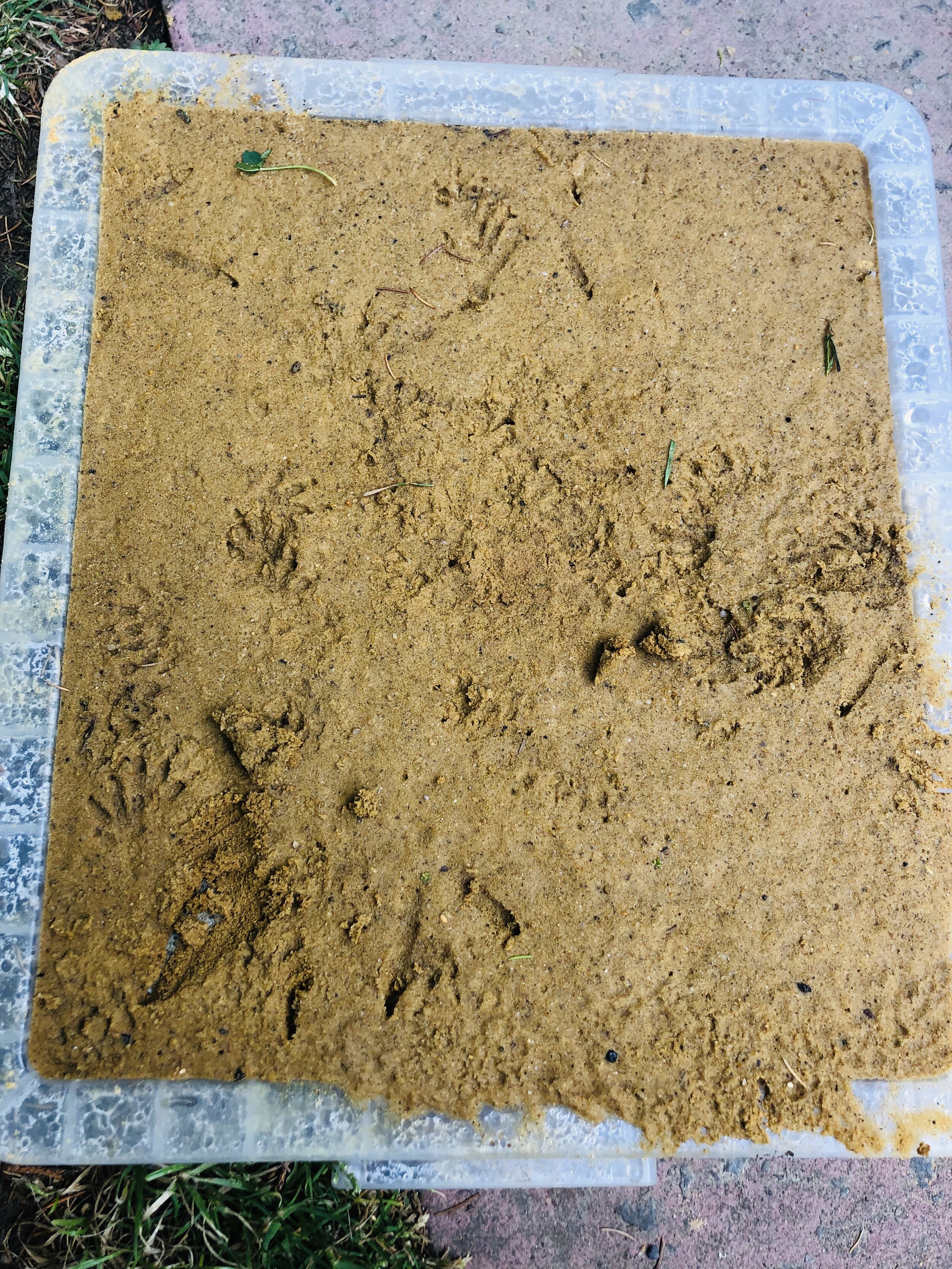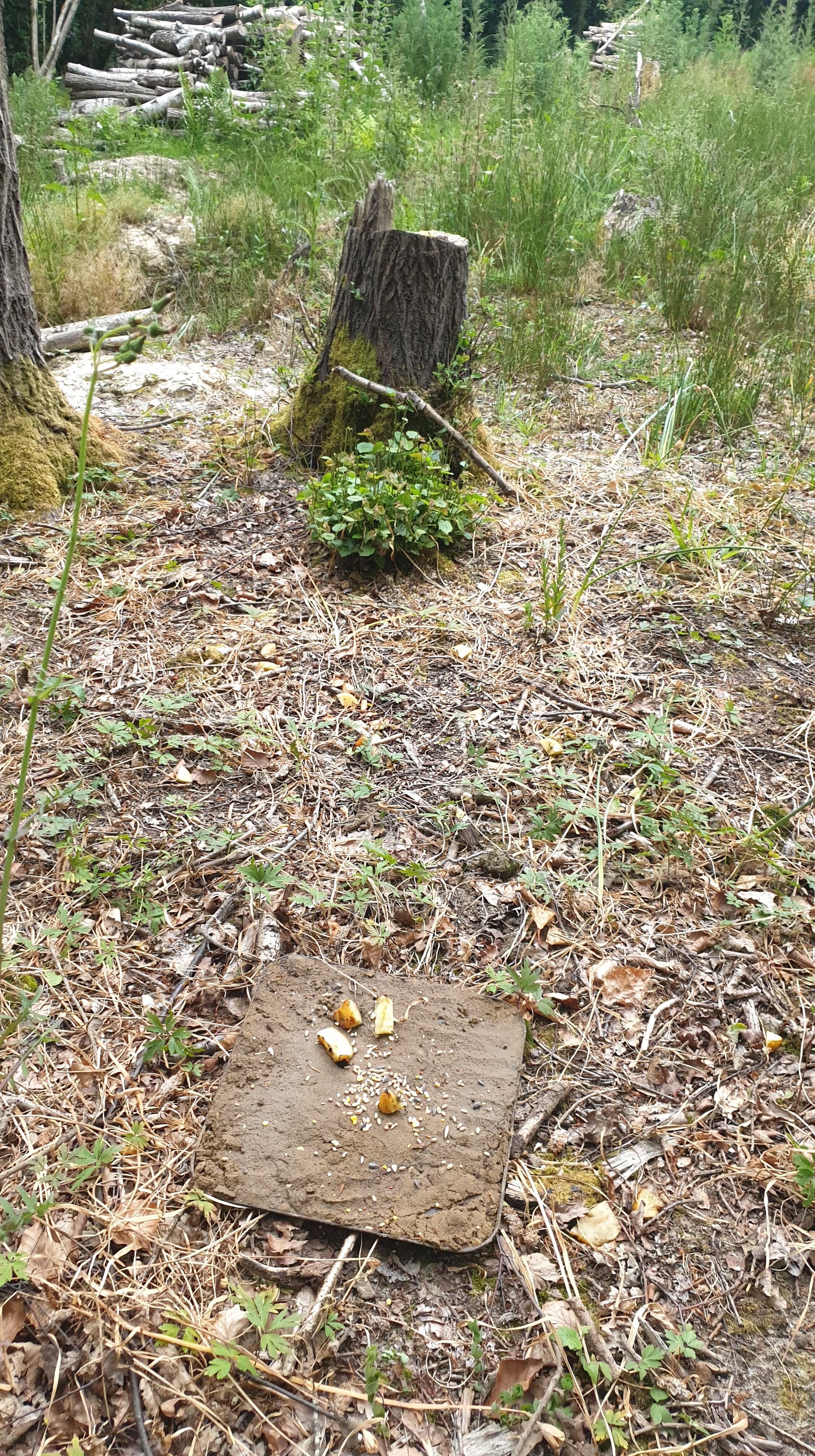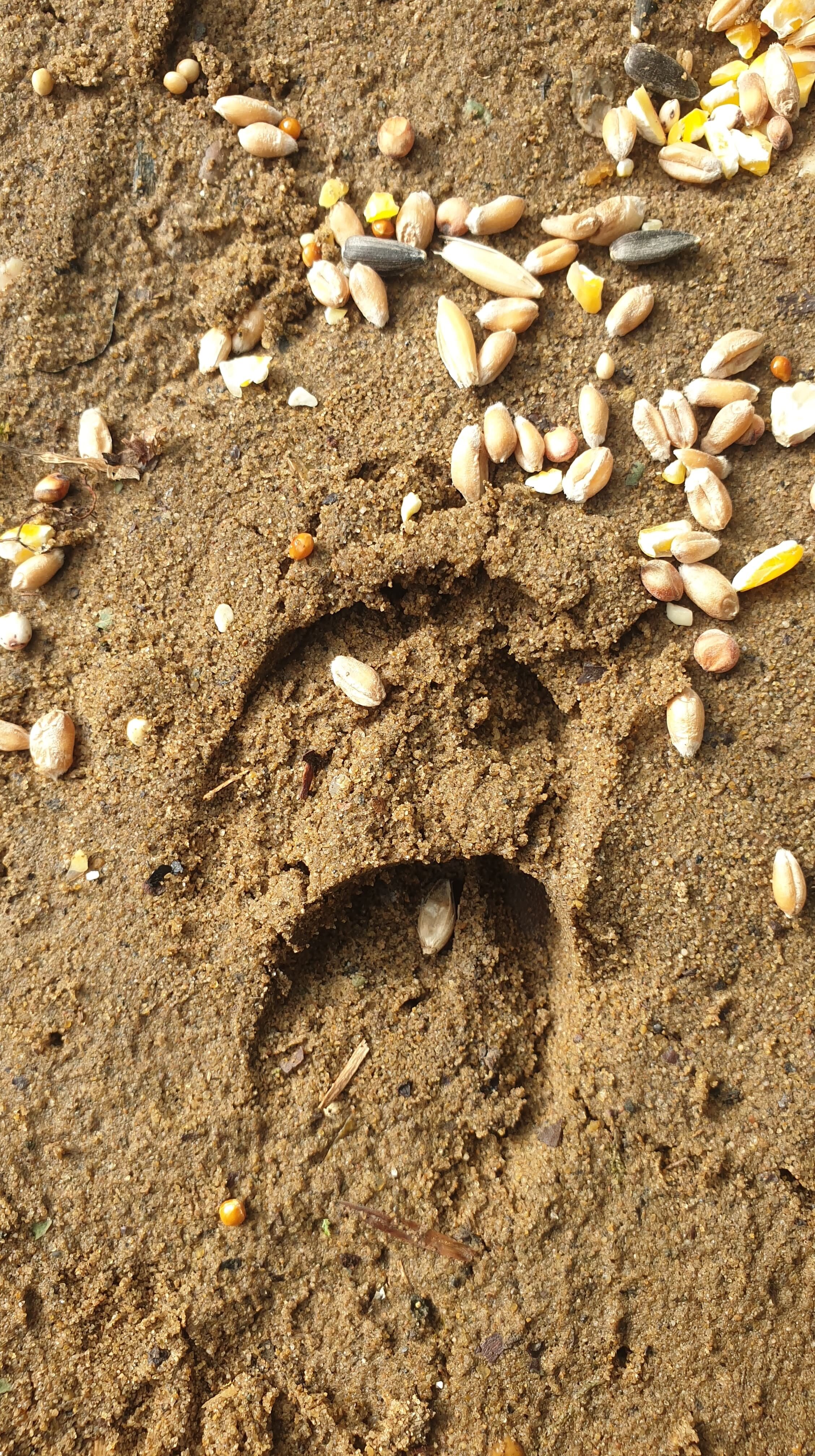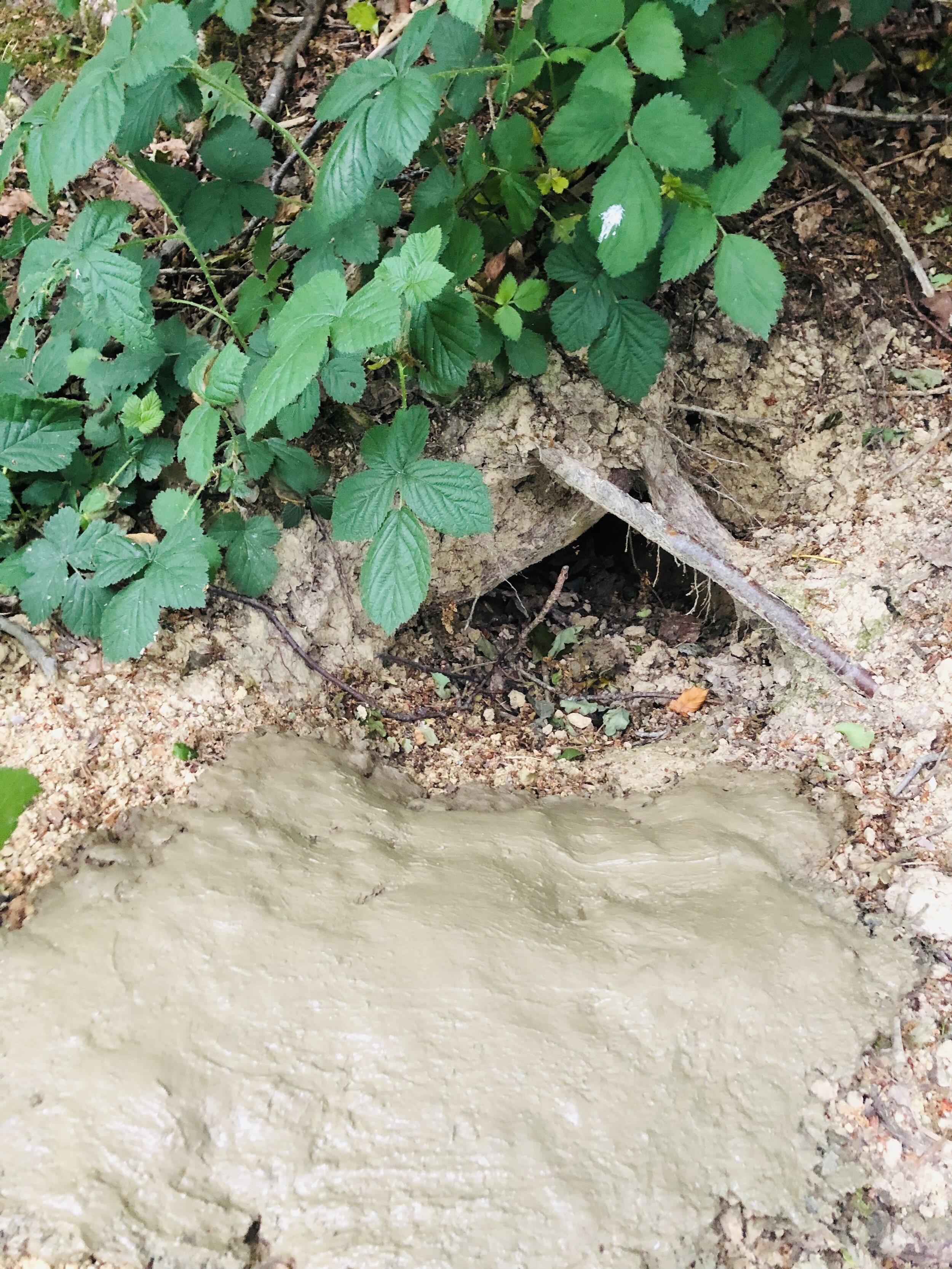Footprint Traps
/By Mel Evans and Kevin Fuller
A great way to discover what animals are in an area is to look at the footprints they leave behind. However, this can be easier at some times of the year than others. One of the magical things about a snowy day in the woods is just how easy it is to track animals. The below pictures show rabbit tracks and squirrel tracks clear enough to be identified by even the youngest of children.
Sadly we get very few snowy days and when we do some of our most interesting animals, such as hedgehogs and badgers are fast asleep. We sometimes find tracks in the mud, but often in the woods, this starts to dry out through the summer months. This is just the time the wildlife is at its most active. Below are prints in mud from a fox and a horse. These were found in March.
Making your own footprint traps in the Summer is an ideal solution to this problem. Its very easy to do, quite a fun sensory process that young children can help with and a great way to start to gather clues on what is living in an area and the routes they follow.
To make a footprint track you need to spread material that will take a print. Wet sand is ideal and can be spread over a tray. The tray is then baited with a little food such as bird seed, fruit, raw meat or cat/dog food.
This track trap picked up some lovely hedgehog prints shown in the first picture below, so we set it up for a second night and filmed it with the wildlife camera. We got some great footage of the hedgehog making the tracks in the second picture.
Kev’s also set a footprint trap and it picked up a deer print. Its not overly clear as the deer looks like it might have twisted its foot in the sand. However, combined with other clues like deer droppings in the area we can guess it was a deer that left this print. Kev also filmed deer in the area using the wildlife camera.
You might be able to make a footprint trap from other materials too. We have a lot of clay in this area so we dug some out the pond and spread it at the entrance of a hole under a tree. The trap did not pick up any footprints, but did confirm that nothing was living in the hole.
If you have a go at making your own footprint trap we recommend RSPB Animal Tracks ID Sheet for identifying your results. Do let us know what is living in your area!

